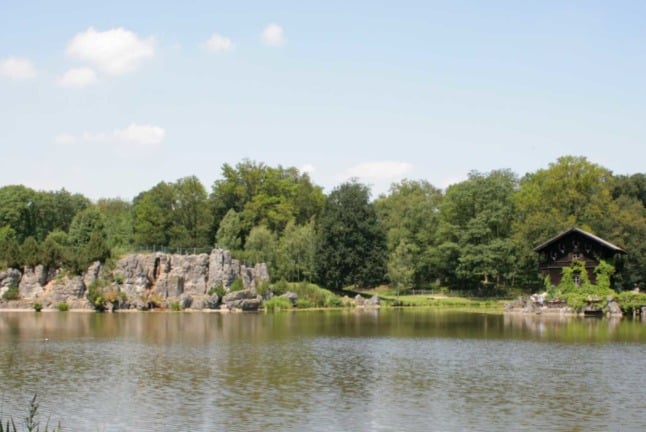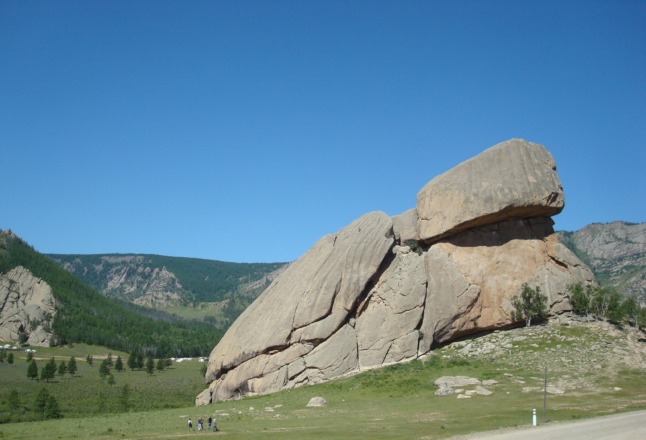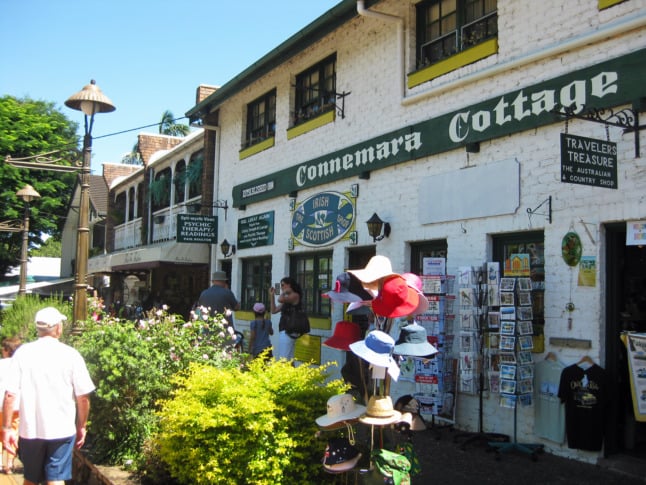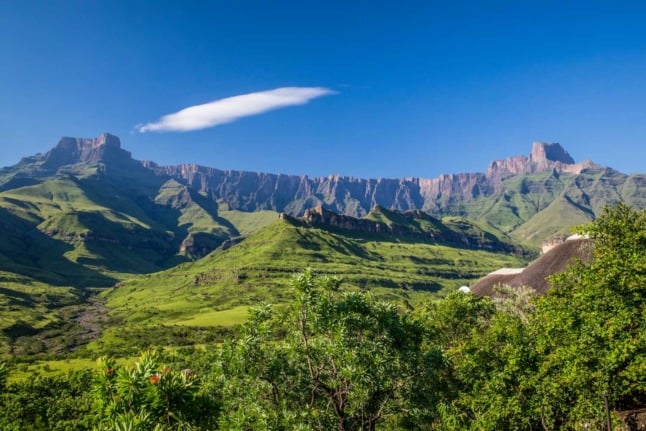IN PICTURES: Ten Swiss-inspired places from across the globe

Hundreds of regions, towns and landscapes across the globe bear the name ‘Switzerland’ in some way. Here are some of the prettiest.
Switzerland’s beautiful villages and landscapes - along with a worldwide diaspora - has meant the name ‘Switzerland’ touches several continents.
Some say there are more Swiss-inspired locations across the globe than from any other country, although this is impossible to determine.
From neighbouring Germany to as far away as Asia, South America and Australia, Switzerland’s influence can be seen.
As German magazine Welt reported, the late 1800s was a period of ‘Switzerland hype’, whereby places were given the name Switzerland or Swiss in far flung areas.
During this time, European colonisation as well as Switzerland becoming the favourite holiday destination for the wealthy meant that Switzerlands sprung up all over the world.
Germany alone has more than 130 areas named after or inspired by Switzerland, with almost every region in the country having its own little piece of Switzerland.
Saxon Switzerland (Sächsische Schweiz), Germany
Perhaps Germany’s most famous ‘Switzerland’, the Sächsische Schweiz - Saxon Switzerland - is a region of the eastern state of Saxony on the border with the Czech Republic.
The region’s sandstone mountains, which produce several unique and striking rock shapes, give the region its name.
Perhaps the most famous image in the region is the Bastei bridge, a sandstone viewing platform which is one of Germany’s most iconic images.
https://twitter.com/Buchstabenliebe/status/1455571105893191684
Morne Vert, Martinique
While the Caribbean climate does not reflect that of Switzerland, the landscapes in the region of Morne Vert, in Martinique have given it the nickname ‘Little Switzerland’.
Martinique, a French overseas department, also shares the French language with Switzerland.
Little Switzerland, North Carolina
The town of Little Switzerland in the US state of North Carolina was christened as such in 1910 as a reference to the mountains which surround it.
https://twitter.com/SwitzerlandCafe/status/1101245386151342082
Rwanda
The African nation of Rwanda has also earned the nickname ‘Little Switzerland’, due to its lush foliage and mountainous landscapes.
In recent years, the country’s stability and economic growth - as well as its pull as a tourist destination - has seen it receive the moniker for a range of non-aesthetic reasons.
The pictures do resemble Switzerland, although as the home to many gorillas, it’s best to ask locals about the best place to hike.
Anholter Schweiz/Anholter Switzerland
On the Dutch-German border is Anholter Switzerland, a landscape and wildlife park based around a Swiss-esque rock formation.
The current park, which was built in 1892, features a homage to Switzerland including a replica Lake Lucerne and a wooden Swiss house.

Anholter Switzerland, on the border between Holland and Australia. Von Frank Vincentz - Eigenes Werk, CC BY-SA 3.0,
Gorkhi-Terelj National Park, Mongolia
The Gorkhi-Terelj National Park is one of Mongolia’s best known national parks - and is also known by the name Mongolian Switzerland.
While some of the rock formations and foliage represents what you might see in Switzerland, the ever present yurts are a dead giveaway that you are not in Switzerland anymore, Dorothy.

Switzerland's influence can be seen as far away as Mongolia. Turtle Rock. By Arabsalam - Own work, CC BY-SA 4.0.
Asturias, Spain
The autonomous Spanish region of Asturias is also called Little Switzerland - and it is not difficult to determine why.
https://twitter.com/conect_asturias/status/1456777504228794371
https://twitter.com/RomanicoEspana/status/1457400880802799621
Bohemian Switzerland, Czech Republic
While this might be geographically linked with neighbouring Saxony, Bohemian Switzerland has a range of special mountainesque features which resemble Swiss landscapes.
The Pravčická Archway, otherwise known as the Pravčická Gate or the Prebischtor, is a natural sandstone arch which has been featured in films and was so popular among tourists that it needed to be closed due to fear of erosion.
https://twitter.com/hochtouren/status/1418147666555461632
Montville, Australia
The town of Montville, located above Brisbane in the Sunshine Coast Hinterland, is known as Little Switzerland thanks to its mountainous landscapes and traditional wooden homes and shops.

The traditional wooden homes and buildings in Montville, Queensland, have been nicknamed Little Switzerland. By S. Newrick - Own work, CC BY-SA 4.0.
Drakensberg, South Africa/Lesotho
The Drakensberg is the eastern part of the Great Escarpment in Southern Africa, crossing through both South Africa and Lesotho.
Due to European settlement, the region became known as Little Switzerland.

Drakensberg, in the southern African nations of South Africa and Lesotho. By Diriye Amey from Locarno, Switzerland - South Africa - Drakensberg, CC BY 2.0,
Comments
See Also
Switzerland’s beautiful villages and landscapes - along with a worldwide diaspora - has meant the name ‘Switzerland’ touches several continents.
Some say there are more Swiss-inspired locations across the globe than from any other country, although this is impossible to determine.
From neighbouring Germany to as far away as Asia, South America and Australia, Switzerland’s influence can be seen.
As German magazine Welt reported, the late 1800s was a period of ‘Switzerland hype’, whereby places were given the name Switzerland or Swiss in far flung areas.
During this time, European colonisation as well as Switzerland becoming the favourite holiday destination for the wealthy meant that Switzerlands sprung up all over the world.
Germany alone has more than 130 areas named after or inspired by Switzerland, with almost every region in the country having its own little piece of Switzerland.
Saxon Switzerland (Sächsische Schweiz), Germany
Perhaps Germany’s most famous ‘Switzerland’, the Sächsische Schweiz - Saxon Switzerland - is a region of the eastern state of Saxony on the border with the Czech Republic.
The region’s sandstone mountains, which produce several unique and striking rock shapes, give the region its name.
Perhaps the most famous image in the region is the Bastei bridge, a sandstone viewing platform which is one of Germany’s most iconic images.
https://twitter.com/Buchstabenliebe/status/1455571105893191684
Morne Vert, Martinique
While the Caribbean climate does not reflect that of Switzerland, the landscapes in the region of Morne Vert, in Martinique have given it the nickname ‘Little Switzerland’.
Martinique, a French overseas department, also shares the French language with Switzerland.
Little Switzerland, North Carolina
The town of Little Switzerland in the US state of North Carolina was christened as such in 1910 as a reference to the mountains which surround it.
https://twitter.com/SwitzerlandCafe/status/1101245386151342082
Rwanda
The African nation of Rwanda has also earned the nickname ‘Little Switzerland’, due to its lush foliage and mountainous landscapes.
In recent years, the country’s stability and economic growth - as well as its pull as a tourist destination - has seen it receive the moniker for a range of non-aesthetic reasons.
The pictures do resemble Switzerland, although as the home to many gorillas, it’s best to ask locals about the best place to hike.
Anholter Schweiz/Anholter Switzerland
On the Dutch-German border is Anholter Switzerland, a landscape and wildlife park based around a Swiss-esque rock formation.
The current park, which was built in 1892, features a homage to Switzerland including a replica Lake Lucerne and a wooden Swiss house.

Gorkhi-Terelj National Park, Mongolia
The Gorkhi-Terelj National Park is one of Mongolia’s best known national parks - and is also known by the name Mongolian Switzerland.
While some of the rock formations and foliage represents what you might see in Switzerland, the ever present yurts are a dead giveaway that you are not in Switzerland anymore, Dorothy.

Asturias, Spain
The autonomous Spanish region of Asturias is also called Little Switzerland - and it is not difficult to determine why.
https://twitter.com/conect_asturias/status/1456777504228794371
https://twitter.com/RomanicoEspana/status/1457400880802799621
Bohemian Switzerland, Czech Republic
While this might be geographically linked with neighbouring Saxony, Bohemian Switzerland has a range of special mountainesque features which resemble Swiss landscapes.
The Pravčická Archway, otherwise known as the Pravčická Gate or the Prebischtor, is a natural sandstone arch which has been featured in films and was so popular among tourists that it needed to be closed due to fear of erosion.
https://twitter.com/hochtouren/status/1418147666555461632
Montville, Australia
The town of Montville, located above Brisbane in the Sunshine Coast Hinterland, is known as Little Switzerland thanks to its mountainous landscapes and traditional wooden homes and shops.

Drakensberg, South Africa/Lesotho
The Drakensberg is the eastern part of the Great Escarpment in Southern Africa, crossing through both South Africa and Lesotho.
Due to European settlement, the region became known as Little Switzerland.

Join the conversation in our comments section below. Share your own views and experience and if you have a question or suggestion for our journalists then email us at [email protected].
Please keep comments civil, constructive and on topic – and make sure to read our terms of use before getting involved.
Please log in here to leave a comment.